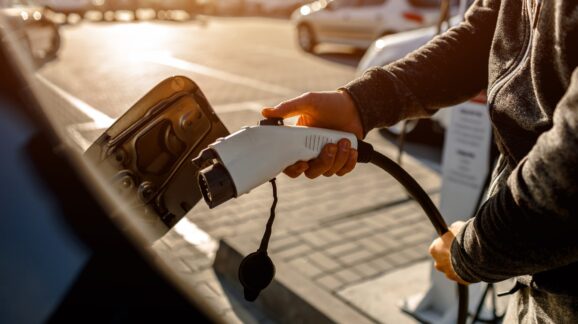What happens if governments stop trying to make electric vehicles happen?

Photo Credit: Getty
I recently spotted an interesting analysis of the market for electric vehicles and the prospect for them eventually replacing ones powered by internal combustion engines. Writing for the Wall Street Journal, Stephen Wilmot highlights the lowered expectations that the EV sector is seeing, and cites pessimism from the Oracle of Omaha himself, Warren Buffet, on the future of the industry. Wilmot writes:
“The auto industry is just too tough.” That was Warren Buffett’s response to a question about the opportunities presented by the shift to electric vehicles at Berkshire Hathaway’s annual meeting [recently]. A few days of earnings reports from EV startups later, it is hard to disagree.
Polestar Automotive became the latest manufacturer to cut its outlook for 2023 alongside first-quarter results [earlier this month]. […] California startups Lucid Group and Fisker also downgraded their production forecasts earlier this [month]. Luxury sedan maker Lucid burned through over $1 billion while delivering just 1,406 vehicles in the first quarter amid signs of weakening demand. Fisker is only just starting to deliver cars, though at least it has the advantage of an experienced production partner in contract manufacturer Magna International.
Wilmot’s story goes on to point out some of the challenging financials, even among the more successful EV makers. Rivian Automotive, which for now is maintaining its production target of 50,000 vehicles for 2023, is still currently losing $75,000 per vehicles sold – and that’s an improvement following a recent cost-cutting campaign. Relative to market cap it’s doing pretty well, though – it’s worth $98,000 for every car it expects to produce this year, while Lucid, as a company, is currently priced at a premium of around $1.2 million per car.
Starting a new automobile manufacturing company was always going to be risky and expensive, given the complex manufacturing processes and regulatory compliance involved, regardless of powertrain type. But the EV market has an additional weakness, which is that it is heavily dependent on subsidies and tax credits.
There is, of course, some genuine consumer interest in electric vehicles, but the unsubsidized demand would obviously be much lower than it currently is, both domestically and around the world. And there’s nothing written in stone that those subsidies will be around forever. The next Congress could cut, sunset, or eliminate them entirely. Even the gargantuan taxpayer windfalls in the Infrastructure Investment and Jobs Act and the Inflation Reduction Act won’t last forever.
Members of the Republican leadership in the House of Representatives have already suggested that they want to repeal EV and other renewable energy credits as part of a legislative deal to raise the federal debt limit. Even Sen. Joe Manchin of West Virginia, who has been a key vote for Democrats in a closely-divided Senate, has said publicly that he would be willing to vote to repeal the Inflation Reduction Act itself, which he had a significant role in writing, if the Biden administration doesn’t back off of what Manchin calls its “radical climate agenda.”
The brittleness and concentration of the market for EVs was also taken recently by Dominic Pino of National Review (also the guest on Episode 14 of Free the Economy). He looked up north to Canada and the predictable response when companies are chasing subsidies rather than actual customers:
Stellantis, which makes Chrysler, Dodge, Jeep, Fiat, and other car brands, is building a new plant for electric-vehicle batteries in Windsor, Ontario. Or at least it was. The CBC reports that Stellantis has stopped construction because the Canadian government has not come through with sufficient financial support.
This is a peculiar outcome if you believe that EVs are what the market wants. If carmakers are pursuing EV production in accordance with market demand, it shouldn’t matter whether the Canadian federal government gives $500 million to subsidize it, as was the deal with Stellantis in Windsor.
The truth is that the EV and battery storage market is heavily dependent on taxpayer subsidies and the carbon offset market and will drop like a rock if those sources ever runs dry and they are forced to depend of actual market demand for their products. The website Electrek reported late last year that Tesla was now eight times as profitable as Toyota. But a big reason for that is that their customers receive a $7,500 tax credit per vehicle and the company pulled in almost $1.8 billion in revenue from carbon credit sales to other manufacturers. That’s up from $1.6 billion in 2020 and $419 million in 2018. As Carbon Credits dot com reported earlier this year, “This represents a significant portion of Tesla’s overall revenue.” No kidding.
We also covered this topic in Episode 21 of the Free the Economy podcast. The electric vehicle segment starts at 1:02.